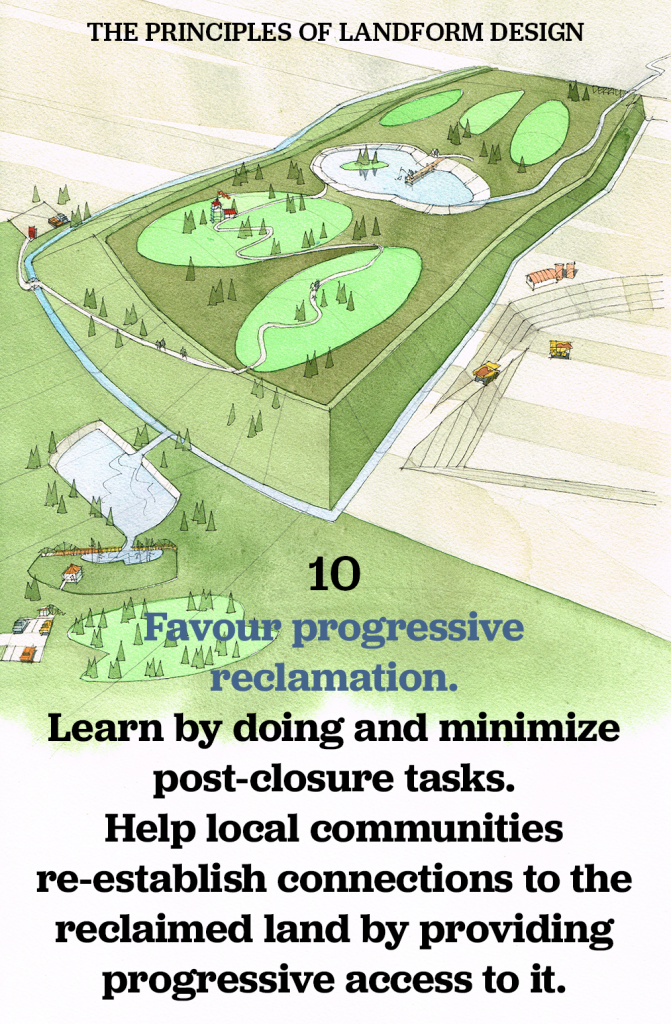
THE 12 PRINCIPLES OF LANDFORM DESIGN
- Mine with the land in mind. Create a shared vision for the reclaimed land with the mine, its stakeholders, and Indigenous Peoples. Work together to earn trust.
- Establish governance. Assemble a multidisciplinary design team that functions as an interdisciplinary team. Appoint a lead designer. Design with flair.
- Co-develop a design basis memorandum that sets a clear vision, then develop the goals and objectives to achieve that vision. Design, construct, and maintain the land as it evolves and adapts to the ever-changing climate.
- Work collaboratively and embrace co-reclamation. Build the reclaimed landscape with the local communities, not for them.
- Design for spatial and temporal scales simultaneously.
- Adopt demonstrated technologies and multiple lines of defense. Design for construction, operations, and closure. Incorporate source control of contaminants; avoid producing soft tailings.
- Use a risk-based approach. Design for the most likely case; embrace the observational method and adaptive management; enact contingencies as needed to allow the landform to perform as intended.
- Know the materials, their properties, quantities, and locations. Conserve soils and biotic entities. Value biodiversity.
- Follow every drop of water through the landscape. Water is key to life and a great agent of disruption. Understand the water balance for each landform across the mine lifecycle.
- Favour progressive reclamation, learn by doing, and minimize post-closure tasks. Help local communities re-establish connections to the reclaimed land by providing progressive access to it..
- Acknowledge that the land will revert to the local communities and support their duty of stewardship. Plan for the sustainable closure and reclamation of every square metre. Anticipate the residual risks that will require financial assurance.
- Share experiences. Learn from failure and celebrate success.
Below are supporting illustrations that can be downloaded for use in PowerPoints and printed materials. All we ask is that you attribute them to the LDI.











